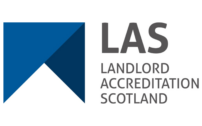Fire detection in private rented properties
Supporting information for Scottish Landlord Registration
Key points
Every home in Scotland must have interlinked fire alarms you are required to install smoke, fire and heat detectors in all tenures of property. Interlinked means if one goes off, they all go off, so you will always hear an alarm wherever you are in your home.
The revised tolerable standard includes a criterion for ‘satisfactory equipment for detecting fire and giving warning in the event of fire or suspected fire’ and applies to housing of all tenures. The introduction of smoke and heat alarms in the tolerable standard is in recognition of the danger fire poses to the occupants of a house, and is intended to reduce the risk of loss of life, injury and damage to property in the event of fire.
The new law came into force on 1 February 2022 and it extends the standard that applied in the Private Rented Sector (PRS) under the repairing standard for private landlords.
Therefore, landlords should have already been complying and are required to do so regardless of when the tenancy started and what previous requirements have already been met.
This guidance defines what is ‘satisfactory’ by setting out the requirement for:
- one smoke alarm installed in the room most frequently used for general daytime living purposes (normally the living room/lounge);
- one smoke alarm in every circulation space on each storey, such as hallways and landings
- one heat alarm installed in every kitchen
- all smoke and heat alarms to be ceiling mounted
- all smoke and heat alarms to be interlinked.
Mains-operated alarms (with battery backup) are permitted, and tamper proof long-life lithium battery alarms (i.e. not PP3 type or user-replaceable) are also permitted. Alarms should be regularly maintained and tested in accordance with manufacturer’s instructions.
Smoke alarm: A fire detector that detects smoke as a primary indication of fire. It produces an audible and/or visible signal locally in a room or a home. Smoke alarms are usually housed in a small, round shaped plastic case, and ceiling mounted. Smoke alarms should conform to BS EN 14604. For more detailed information on smoke alarms, see BS 5839
Further Context
The tolerable standard is amended by the Housing (Scotland) Act 1987 (Tolerable Standard) (Extension of Criterion) Order 2019 and now includes this new element covering smoke and heat alarms. For the first time, assessors will consider the presence, type and condition of smoke and heat alarms in a house when deciding if the house meets the tolerable standard. These criteria, which already formed part of the repairing standard, now apply to all houses.
Landlords should refer to Scottish Government Guidance for the Provision of smoke and heat alarms when installing, maintaining or repairing them – https://www.gov.scot/publications/fire-and-smoke-alarms-in-scottish-homes/
More information on the standard, including the types of alarms and how to assess what is required is in the – Tolerable Standard Guidance Chapters 16 and 17.
It may be that there is a more stringent standard of provision for detecting and giving warning of fire for example, in a house in multiple occupation (HMO) requiring to be licensed, or if work requires a building warrant.
The standard is enforced by the right of tenants to apply to the First-tier Tribunal for Scotland (Housing and Property Chamber) Penalties for non-compliance would be determined by the tribunal.
Maximise your Success as a Landlord
LAS run a regular programme of training courses helping landlords adopt best practice and remain updated with changes to legislation. Anyone involved in letting property in the private rented sector in Scotland is welcome to attend. You do not need to be accredited.
